|
||||||||||
| Home Nation World Business Opinion Lifestyle ChinAfrica Multimedia Columnists Documents Special Reports |
|
||||||||||
| Home Nation World Business Opinion Lifestyle ChinAfrica Multimedia Columnists Documents Special Reports |
| China |
| Working Smarter |
| Chinese women farmers learn new techniques and skills to maintain family fields and improve livelihoods |
| By Liu Jian | VOL. 8 February 2017 ·2017-02-04 |
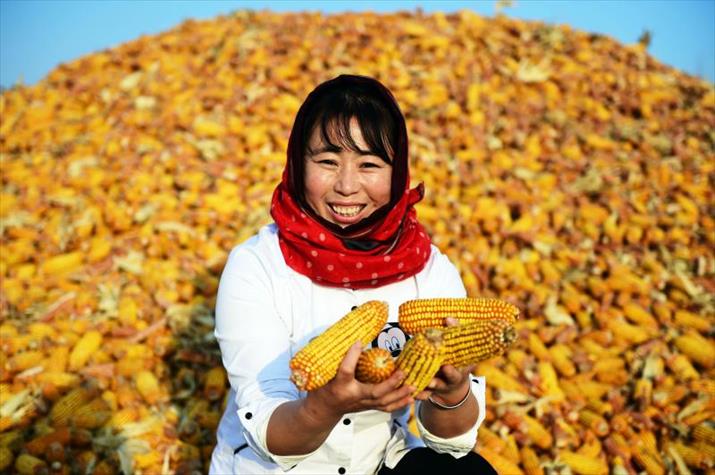
For Wang Xiuzhen, transplanting rice seedlings all day in the past was tiring work. The paddy fields became a place of pain for the Chinese woman farmer in her 40s, causing her to suffer from endless back problems and dread each waking day.
Fortunately with the advancement of technology, Wang now has the use of a specialized machine that can transplant rice seedlings in paddy fields. Wang and the other women farmers in the area no longer suffer from back pain and she is upbeat about the future. "We have freed ourselves from the tedious work of planting paddy fields by hand," she said.
"It's very efficient. The paddy planter can transplant more than 3 mu (0.2 hectares) of field per hour, and it can transplant the seedling quickly requiring only one person to operate it," said Wang.
Mechanization benefits
Five years ago, while working outside of her hometown, Wang saw the rice transplanter machine for the first time. Having learnt the machine could save farmers' considerable time and labor, she bought one and began to use it to grow rice in her hometown in Tanzhuang Village, Shanghe Town in Huai'an City of east China's Jiangsu Province.
She learnt how to operate the rice transplanter and used it on her family fields, while assisting other farmers, saving both time and labor, increasing efficiency and earning more money.
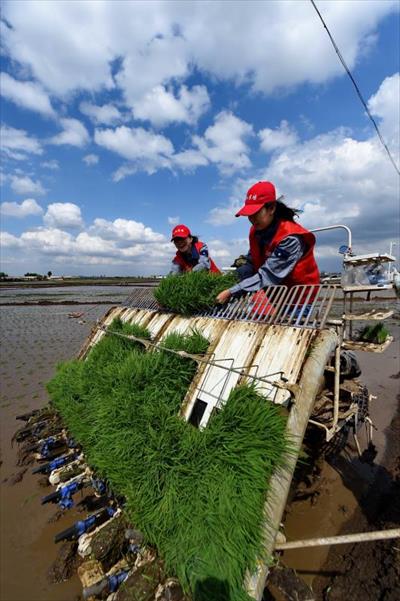
The transplanter is just one of a range of methods that China now enjoys in its increased mechanization of grain crops production. On average, the mechanization rates of planting and harvesting wheat, rice and corn have reached 91 percent, 55 percent and 56 percent respectively, according to Professor Wu Weihua at China Agricultural University. In the country's main wheat and rice production areas, the mechanization rates are higher, he added.
Along with rapid urbanization in China, more and more young men go to cities for work, while the women, elderly and children tend to be left behind to care for family fields.
"Mechanization is important not only for agricultural production, but also for alleviation of drudgery and the heavy work load on women, children and the elderly," said Wu. "Because it improves agricultural productivity and reduces the dependence on labor, which equates to an increase in labor productivity."
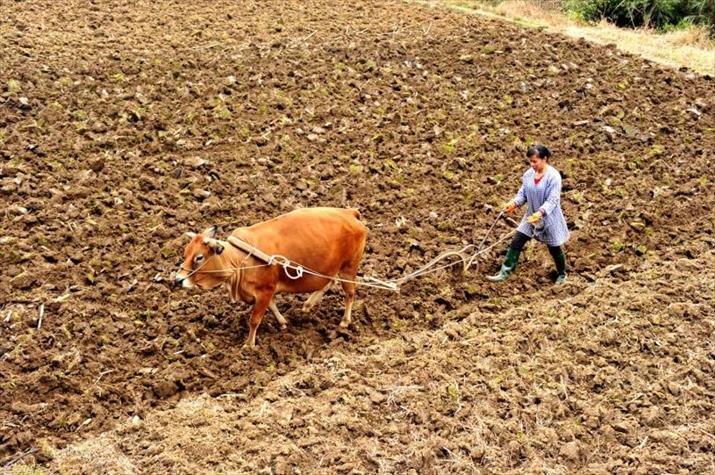
Ni Yanye, 50, a woman farmer in Dazhuyin Village, Lianyungang City of Jiangsu Province, echoed Wu's idea. She said mechanization has reduced much of her farming workload.
Ni's husband works in Shandong Province and only returns home during the Chinese Spring Festival. Thanks to the use of machines, she can manage to grow wheat, corn and peanuts on her family's 5 mu (around 0.33 hectares) of land on her own.
"I had to work for two weeks non-stop to harvest wheat in the hot summer days in the past, but now the wheat combine harvester can do wheat cutting, threshing and seed cleaning at the same time within one hour," she told ChinAfrica, adding that for the use of the harvester, she only pays 80 yuan ($11.6) per mu (0.067 hectares).
"It's not as painstaking as before to grow and harvest crops. With machines, it's easy, fast and efficient," she said. "After using the machines, I have much more time to take care of two children and do other things."
She noted that farmers had to pick corncobs by hand and clear up corn straw in the past. But now the corn harvester can do all the work at the same time. "The smashed corn straw scattered in the field is good fertilizer," she said.
Skills development
To encourage more farmers to use rice transplanters to increase efficiency, Tanzhuang village officials also organized transplanter operation training programs on a regular basis.
Wang Xiuzhen is now a woman pioneer in the use of new farming techniques and machines in her village. Following Wang's example, other women farmers began to learn to use the machine, and equip themselves with new techniques and skills.
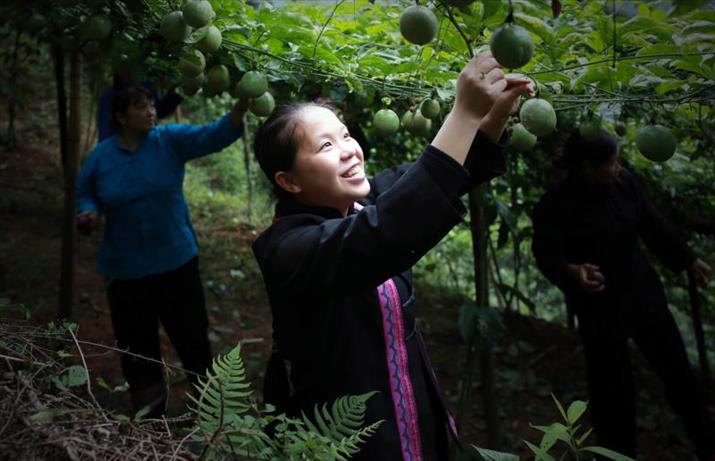
Like other areas in China, men in Wang's village also go to cities to work and women farmers shoulder the responsibility to care for the family fields and agricultural production, according to Wang. In addition, they also take the initiative to learn new techniques and upgrade their skills to become farming experts.
"As long as I have time, I take part in the farming mechanization training programs, from raising seedlings to transplanting them, and from using transplanters, harvesters to machine repair and maintenance," said Wang.
Luo Yan, 42, a woman farmer in Liuyu Village, Kaiyang County in southwest China's Guizhou Province, is content with her life, not only because she learnt the skills of growing snake gourds and made money, but also because she taught other women in her village the skills and helped them live a better life.
In 2015, she grew 1 mu (0.067 hectares) of snake gourds and earned 30,000 yuan ($4,348), while last year she expanded the land to 3 mu (0.2 hectares) and earned a total income of around 100,000 yuan ($14,493).
A couple of women farmers in her village work with her to grow snake gourds. "I worked 20 days every month and earned 1,600 yuan ($232). I earned more than my son who is working in the city," said Huang Shibi, a woman farmer who works with Luo. "I grow crops, make money, and also take care of my grandchildren," she said proudly.
"Today, in rural areas, women farmers have become the main force of crop production, therefore to enhance their farming skills and increase their knowledge is a priority," said Xu Jing, Deputy Head of the Liuyu Villagers' Committee.
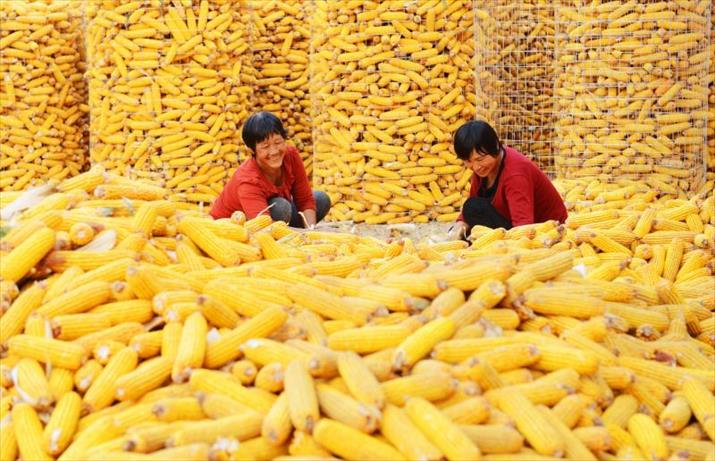
Like Luo, there are more than 100 such women farmers who became well off through learning new skills and hard work, thanks to the establishment of Women's Home in the village by the government in 2012. Since then, it has become a training and skills development center for local women farmers.
Technicians and farming experts are invited to provide training courses regularly, while field visits are organized to other places for women farmers to learn advanced agricultural technology and practices. This has helped increase their knowledge.
"Every year, more than 1,000 women have participated in the training programs, and their agricultural production skills have been greatly improved," said Xu.
Supported by Women's Home, the village has built a production base of snake gourds with more than 30 woman farmers on 300 mu (20 hectares) of land, generating an annual production value of more than 10 million yuan ($1.45 million). In addition, the village now has also established several planting bases for vegetables and fruits including tomato, potato, chili, plum and strawberry.
| About Us | Contact Us | Advertise with Us | Subscribe |
| Copyright Beijing Review All rights reserved 京ICP备08005356号-5 京公网安备110102005860号 |